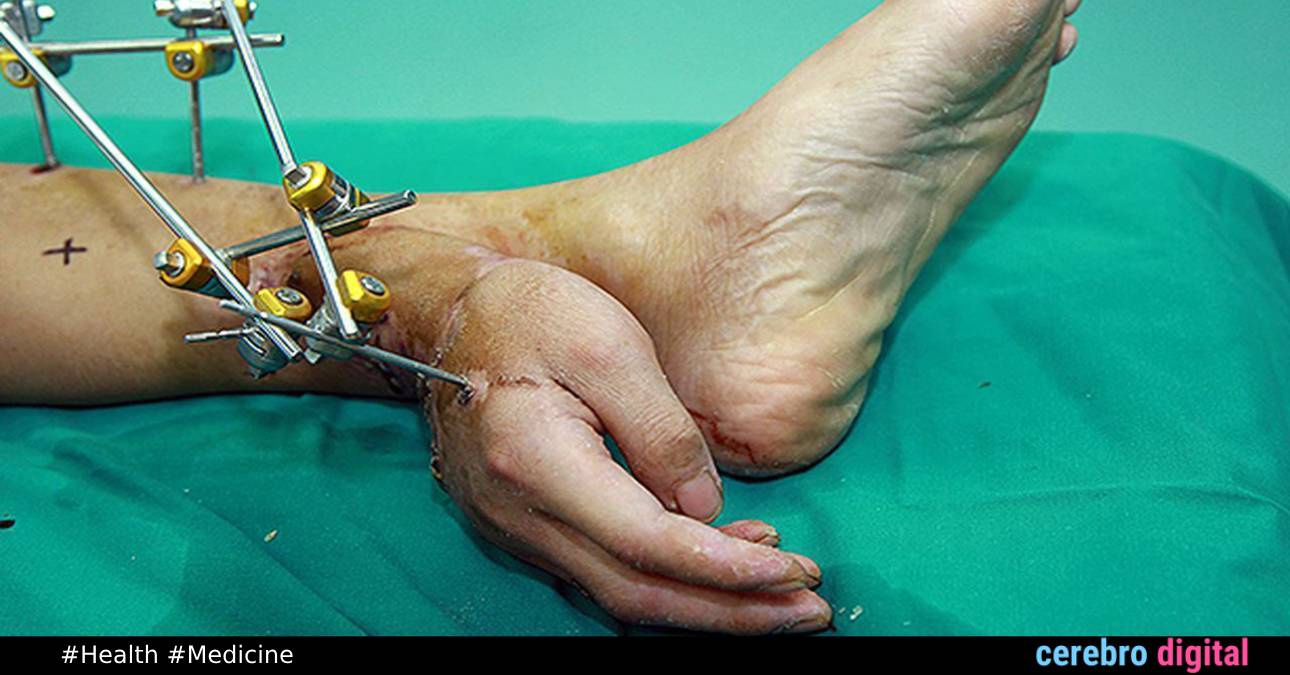
In 2013, due to a workplace incident, Xiao Wei’s right arm was severely damaged in terrible circumstances. To prevent the total loss of the limb, doctors did something incredible: they transplanted the hand to the ankle.
Transplanting a Hand to the Ankle

At the time of the accident, Wei was immobilized, and a colleague quickly disconnected the machinery and rushed him to the hospital.
However, at the local hospital in Changde, doctors faced a situation that required additional expertise, so they decided to transfer Wei to the regional hospital in the Hunan province.
In this new setting, experts knew that time was a scarce resource, especially in accidents of this magnitude. The key was to maintain a constant blood supply to Wei’s hand while they undertook the complex task of rebuilding his crushed arm.
Surprisingly, they decided to use his left ankle as a temporary location for the graft. The arteries in his leg provided the ideal conditions to keep Wei’s hand alive while they proceeded with their treatment.
A month later, surgeons managed to remove the hand from the ankle and re-implant it in his arm. However, this milestone does not mark the end of the process for Wei, as doctors informed him that he still needed to undergo several surgeries before fully recovering the functionality of his hand.
The severity of Wei’s injury is evident in the fact that his arm was not only crushed but also had considerable abrasions against gears. This meant that, before the re-implantation surgery, doctors had to perform a meticulous cleaning and treatment of the injuries.
Limb Re-implantation

Although this type of procedure is uncommon, Dr. Cairian Healy from the Royal College of Surgeons in England emphasized that it is not inconceivable, especially in China, where there is extensive experience in microsurgery. The concept of saving an amputated body part by grafting it into another location with a blood supply is widely recognized in the medical field.
However, Healy acknowledged that the ankle is an unusual area for a graft, as surgeons typically opt for areas like the armpits due to better blood supply.
The specialist explained that there are multiple reasons why surgeons may not immediately re-implant an amputated limb in its original location, such as the lack of suitable conditions or the need for the patient to be strong enough for a surgery that, in some cases, can take between 8 and 15 hours.
In situations like this, the priority is always to keep the amputated limb alive. Healy pointed out that few surgeons would consider re-implantation after several hours, as internal tissue can deteriorate. However, a crucial factor is to keep the amputated tissue in a container with ice immediately after the injury, which can prolong its viability before it begins to die.
Unfortunately, not all re-implantation attempts are successful, and some patients, due to side effects such as pain and stiffness, may choose amputation at a later stage if they are not satisfied with the final result.
